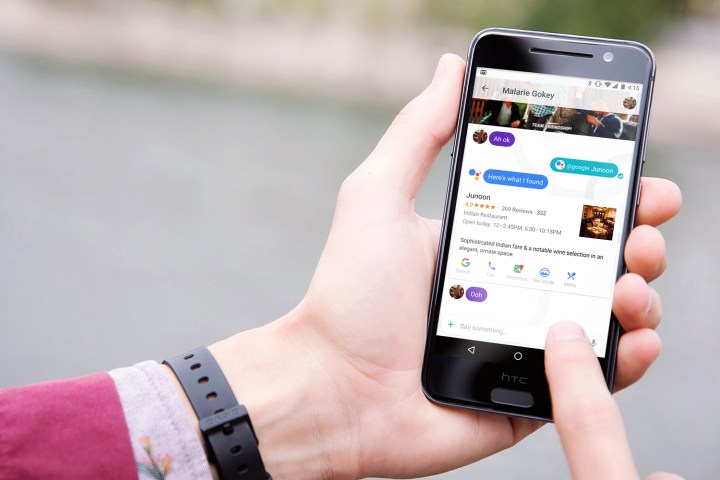
Messaging on the go? Smart Reply for Android Messages lets you text with a tap, rolling out starting today on Project Fi. pic.twitter.com/FRYO4hu9Ah
— Google Fi Wireless (@googlefi) January 24, 2018
Android Messages is the default text messaging app on many Android phones, but bringing Allo’s Smart Reply feature only to Project Fi users means only a small group of people will be able to use it. Smart Reply suggests quick replies that show up above your keyboard that you can tap to send a response quickly and easily. It’s a small feature, but it will appeal to anyone in a rush, or anyone who lives in a cold climate — less time with fingers tapping on a screen is more time said fingers can be kept warm.
The process takes advantage of Google’s machine learning capabilities. Smart Reply analyzes your conversation, noting the tone and content of the chat, and suggests a number of replies based on what it think you’ll want to say. It can even offer up quick messages in response to photos — as the technology can understand the context of a photo. For example, if a friend sends a picture of a corgi, you may get a Smart Reply offering, “cute corgi!” These messages will improve and adapt to your chatting style over time.
As we mentioned, Smart Reply support in Android Messages is restricted to phones on Google’s Project Fi network. That’s an unfortunately small pool to pick from: The Pixel smartphones, a few Nexus phones, or the Moto X4. It’s likely the feature will eventually roll out to everyone using Android Messages.
Allo was announced back in 2016 alongside three other chat apps, and despite the fact that Allo worked pretty well, Google failed to provide any real distinction between the six available chat apps that it had out at one time. It hasn’t exploded in popularity, despite desktop support and continued patches to allow for more language support.